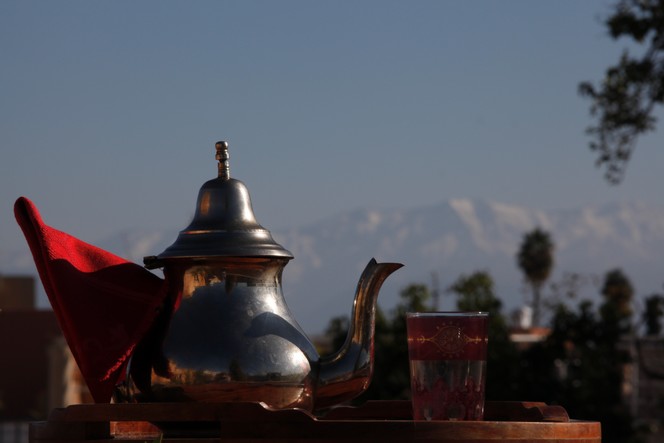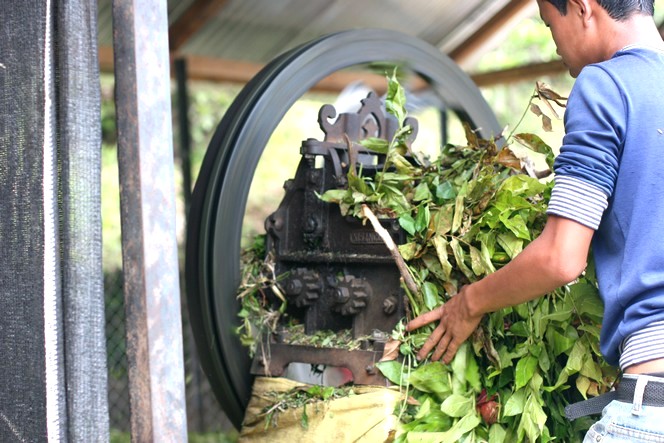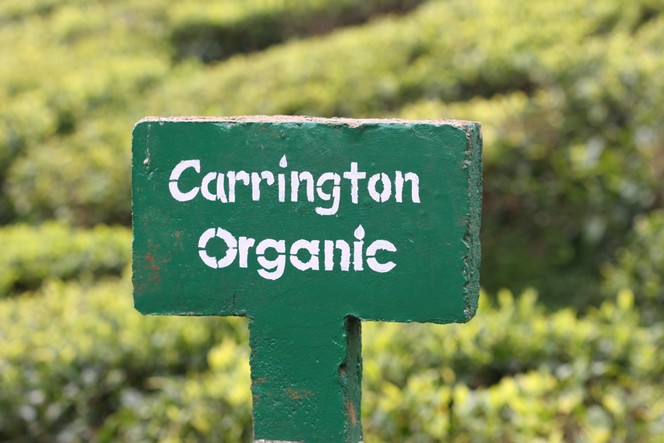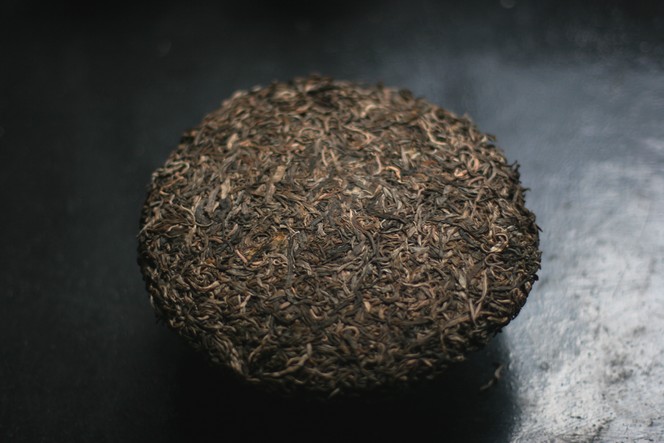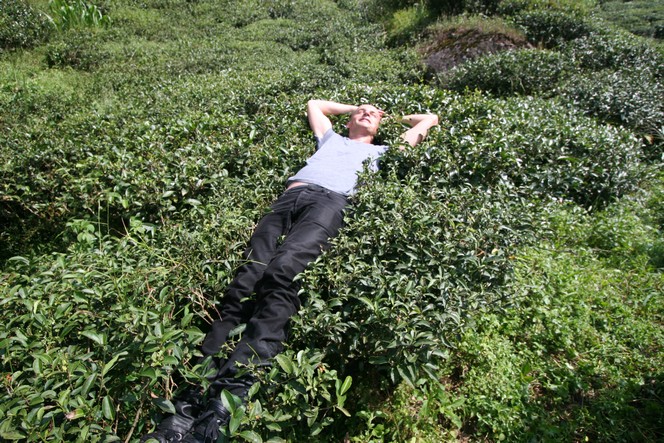Lorsque le froid vous tombe dessus, quoi de plus agréable que de rentrer chez soi, mettre en route la bouilloire et se réchauffer les doigts quelques minutes plus tard au contact d’une tasse de thé fumante ?
Sous un beau soleil hivernal, me voici en train de siroter un thé brûlant face aux montagnes du Haut-Atlas
Sipping scalding tea is a treat in winter
When you’re feeling cold, what could be better than going home, putting the kettle on and warming your fingers a few minutes later around a cup of steaming tea?
Under a beautiful winter sun, here I am sipping boiling hot tea overlooking the High Atlas mountains.

